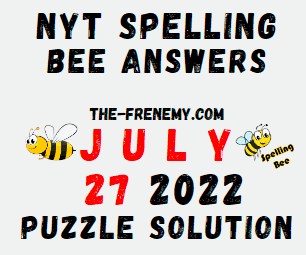
So what makes these hard for humans? To answer this question, we need a model of human solvers from which we can derive a measure of difficulty. This Mathematica program can (approximately) solve them in 141 characters: What makes some puzzles hard and others easy? For computers, these puzzles are all easy. The first step in this project was quantifying difficulty. The highest rank is "Genius", which requires that the player get at least 70% of the available points. As such, there is no fixed score required to "win", but there are ranks which are assigned based on the score. The objective is to get the highest possible score. Pangrams of length \(n\) are worth \(n+7\) points.Words with \(n>4\) letters are worth \(n\) points.It cannot contain the letter "S" (because it would be too easy to form plurals).There must be at least one "pangram": a word which uses all of the letters.The puzzle itself must satisfy the following criteria: However, "aura" is not a valid solution because it does not contain "M". The word is not "obscure", offensive, or a proper noun.įor example, "grammar" is a valid solution for the puzzle above.The word is at least four letters long.The word contains the center letter (in this case, "M").The word uses only the letters in the hexagons (in this case, "M", "A", "G", "L", "O", "R", and "U").The goal is to list as many words as possible that meet the following criteria: 4.4 Number of Solutions for Published Puzzlesįor each puzzle, the player is presented a hexagon of letters like this:.4.2 Hardest and Easiest Published Puzzles.4 How Do the Published Puzzles Fit Into the Space of All Puzzles?.3.2 Relationship Between Difficulty and the Number of Solutions.3 Finding the Hardest (and Easiest) Bee.

2.1 How Humans Solve Spelling Bee Puzzles.Along the way, I found the easiest and hardest possible puzzles (as well as the easiest and hardest that The New York Times has ever published), and lots of other results in this unnecessarily detailed analysis of the Spelling Bee. This got me thinking about mathematically modeling difficulty in Spelling Bee puzzles, which led me down the rabbit hole of exploring the space of all possible Spelling Bee puzzles, and how the puzzles published by The New York Times fit into that space. The rules are so simple that the game sounds trivial, but it isn't (at least for us humans). Instead, the goal is to list as many words as possible using only a given set of letters, along with some other restrictions. Despite the name, it has nothing to do with those competitions where contestants compete to spell obscure words. The Spelling Bee is a word puzzle published daily by The New York Times. Finding the Hardest Spelling Bee Puzzle An Unnecessarily Detailed Analysis of Word Puzzles From The New York Times


 0 kommentar(er)
0 kommentar(er)
